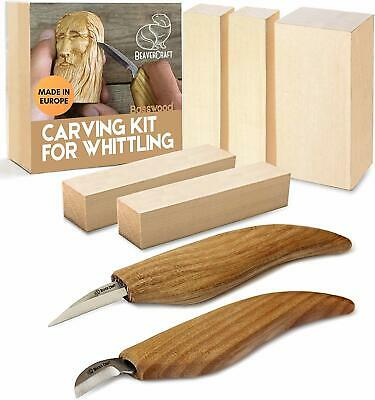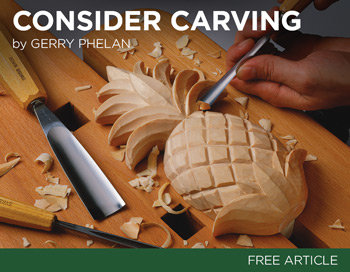
Sharpening your wood carving tools will increase your enjoyment of carving. These are the most common ways to sharpen your wood carving tool. Sharper edges last longer and are more durable than dull ones. Sharp edges also ensure a more efficient use of your tool. Sharp edges simplify carving and increase cutting efficiency. Listed below are three common methods of sharpening wood carving tools. Keep reading for more information. - Using a Sharpening Stone.
Sharp edges are a great way to enhance your carving experience
You can carve the most beautiful things with sharp tools. Sharp tools are easier to use and allow for more control when carving. A smooth, well-cut blade gives you a smooth cut. For a successful carving project, sharp tools are crucial. To achieve best results, you should sharpen your carving tools frequently. Regular sharpening will keep the tools sharp and makes carving easier.
Sharp edges can increase the pleasure of carving but they can also cause blisters. Wood's natural texture can be rough so regular handling will make the skin more resilient. However, calluses will eventually form from blisters. This process can be time-consuming and sometimes painful. Change the way that you hold your tool if blisters appear in your carving. You may need to practice, but it will pay off in the end.
You should use a sharpening set and a fine-grained knife when sharpening knives. You must also inspect for damage at the edges. Chips at the edge will require you to grind harder. A dull edge may require minimal grinding on a finer grade grit. Finally, you can test the knife with a piece of paper or rope. You don't need to use a sharpening knife if your knife has been dull for a while.
Common techniques for sharpening wood carving tool
There are many different methods of sharpening wood carving tools. There are several options for sharpening wood carving tools. Oil stones require that oil be applied to stone's surfaces to prevent metal particles forming on it. For sharpening carbide-wood carving tools, ceramic and diamond stones do not require oil. This article will talk about the common methods of sharpening wooden carving tools.

The leather strop is used to remove the wire from a blade's edge and polish it. A leather strop is good for all tools. However, some carvers prefer a more textured one. A flat leather strap is ideal for straight tools and the outside edge of gouges. For those who take their work seriously, a leather strop that has grooves may be a good investment.
Bench chisels are traditionally sharpened at a 25-degree angle with a five-degree secondary bevel. Modern alloys are not compatible with these angles and may crack. You will need to increase the angle of your bevel. This requires using more force and will result in less control. The same goes for block planes. They are often sharpened at an angle of 20 degrees.
Sharpening stones
You can sharpen your wood carving tools with a sharpening tool. The stone contains grit, a mineral in crystalline form that is harder than steel and has sharp edges. The stone will require a lubricant to aid in cutting and prevent metal particles getting stuck. When your tool has been sharpened to a point that is sharp, it will be easier to use it to cut wood without resistance. The strop (often made of leather) is used to polish the edge, remove burr, and clean up the edges.

There are various types of sharpening stones available in the market. There are oilstones (waterstones), ceramic stones, and others. The oil stones use oil to prevent small metal particles from embedding in the stone. Both ceramic and diamond stones don't require any lubricants. They are both effective in sharpening carbide wood carving tools.
Sentima is an excellent example of a high-quality sharpening system. It comes in two sizes, a coarse one and a fine one. Both are made from corundum. It has a consistent grain which allows it to provide fast cutting and smooth finishing. Its unique design also makes it easy to clean. The sharpening tool is made of durable materials so it can last for many years.
FAQ
How long does it usually take to complete a piece furniture?
It depends on the wood type you choose, the complexity and the amount you apply to the finished product. Hardwoods are more difficult to maintain than softwoods. Hardwoods tend to be more expensive that softwoods. But they last longer and resist moisture better. Finishing furniture can take anywhere from one week up to three months.
Are you a genius in order to master woodworking?
No. Woodworking is not rocket science. You can create beautiful pieces of art by learning how to use simple power tools.
How can you calculate woodworking pricing?
It is crucial to keep project costs as low-cost as possible. Always ensure you are getting the best possible price for materials. Also, consider all other factors that can affect the price of your projects such as skill level, experience, time and cost. Our guide to the average household DIY task price will give you an idea of how much it costs to complete different types of woodwork projects.
What woods can be used to make furniture?
Woods are classified based on their hardness. Softwoods include cedar and pine as well as cedar and cedar. Because they resist rot, softwoods can be used to make outdoor furniture. The hardwoods include teak, maple, mahogany and oak. They are generally indoors as they don't weather well outside.
What is the main difference between plywood or particle board?
Plywood consists of layers made from wood and pressed together by pressure. Plywood can come in many thicknesses and is used for flooring and cabinets. Particle board can be made from sawdust, resin, and then compressed to make large blocks. This board is commonly used in home improvement projects. Both types of boards can be easily cut and are durable.
How often do I need to buy new supplies
You'll probably have to replace some of your tools over time. Sharpening hand tools is a must. If you are using power tools, you will need to purchase replacement parts regularly. You can spread your purchases over a number of months to avoid spending too much.
Where can I purchase woodworking supplies
There are many places that you can find all the information you need. You could shop at your local hardware store or go online to Amazon.com.
You can also search flea and garage sales for furniture and other materials that can be reused.
Statistics
- Average lumber prices rose about 600 percent between April 2020 and May 2021. (familyhandyman.com)
- The best-paid 10 percent make $76,000, while the lowest-paid 10 percent make $34,000. (zippia.com)
- In 2014, there were just over 237,000 jobs for all woodworkers, with other wood product manufacturing employing 23 percent; wood kitchen cabinets and countertop manufacturing employing 21 percent. (theartcareerproject.com)
- If your lumber isn't as dry as you would like when you purchase it (over 22% in Glen Huey's opinion…probably over 10-15% in my opinion), then it's a good idea to let it acclimate to your workshop for a couple of weeks. (woodandshop.com)
External Links
How To
How to drive a nail through wood
First, choose the right size and type of tool to drive a nail through wood. The most commonly used types of Hammers are claw hammers. Each type has its strengths and weaknesses. A claw hammer, for example, is the best choice if you need to hit nails hard. However, it's not easy to know exactly where the impact will land. The sledgehammer works well for large areas, but is too heavy for smaller tasks.
Place your hand flat on the side of your chosen hammer so that the handle rests in your palm. Take the handle and hold it with both hands. But don't press down so hard you injure yourself. Hold the hammer straight up, keeping your wrist relaxed. Next, swing the hammer toward the ground and aim for the nail's center. You should feel the impact on the nail from the hammer. You can practice swinging the hammer with a block or wood until you feel the rhythm.
Once you are ready to drive the nail, place the hammer close to your body. You will need to position the nail so it is parallel to the wood. Keep your eyes on the tip. Move the hammer forward and then continue to move the hammerhead. Continue this motion several times, slowly increasing the speed of each swing. When you are confident with the technique, add power to your swings. Hold the hammer high above your shoulders and pull it down. You will be able to use more energy and put your best foot forward.
Once you've nailed the first hole, remove the hammer from the nail. To pull out the remaining nails, use a screwdriver or pry bar. Keep the nail heads parallel to the board's surfaces in order to avoid splitting wood.